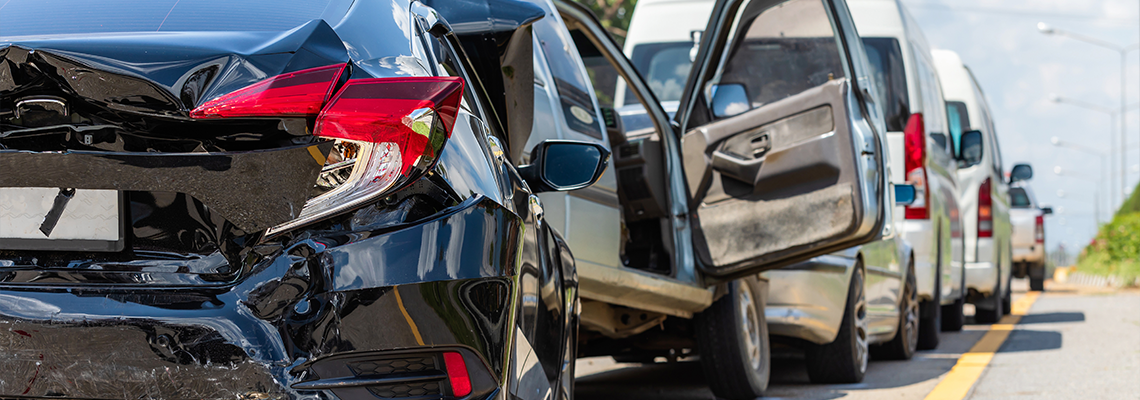
How to Prove Fault in a Rideshare Accident Involving Multiple Passengers
Rideshare services such as Uber and Lyft have changed how we travel. With just a tap, passengers can summon a ride in busy cities like New York or quiet neighborhoods. However, as convenient as these services are, they raise new questions about safety and accountability.
When accidents occur and multiple passengers are in the vehicle, sorting out who is at fault can be confusing and stressful. At The Eskesen Law Firm in New York, New York, I work with those injured in rideshare collisions to clarify responsibility and protect your rights.
My practice focuses on personal injury claims and helping you hold the responsible parties accountable for their actions. If you need a rideshare accident attorney, you can rely on my experience to pursue your claim.
How to Proving Fault in a Rideshare Accident
Proving fault in a rideshare accident with several passengers can be challenging. Therefore, you will need to plan your approach carefully. Taking specific actions can help you move your case closer to a fair result.
Gather Essential Evidence
Collecting evidence should be one of your first actions. The quality of your evidence can have a substantial impact on your case. The types of evidence you should consider collecting include the following.
Accident report: Notify the police to create an official report at the scene. This report provides objective details regarding the incident and those involved.
Photographic documentation: Take clear photos of all vehicles, visible injuries, and anything else relevant, such as street signs or traffic signals. Weather and lighting might also factor into the circumstances.
Witness accounts: If bystanders or passengers are willing to talk, obtain their contact information, write down their observations, and ask them to provide a formal statement.
App records: Keep all communication and trip logs from the rideshare app. Screenshots and ride receipts can show timelines and the sequence of events.
Review these pieces of evidence for accuracy and make sure your documentation is chronological and comprehensive. Organized records often lead to fewer disputes later and can make future discussions with insurance companies or courts more straightforward.
Identify All Responsible Parties
Rideshare accidents can involve more than one responsible party. Each should be adequately considered to help establish clear liability. Typically, the responsible parties in a rideshare accident fall into one or more of the following categories:
Driver negligence: Drivers sometimes cause accidents by failing to follow traffic rules, speeding, or operating a vehicle while distracted.
Other motorists: Accidents might be caused by another driver’s mistakes, such as running red lights or making improper lane changes.
Third parties: In some cases, defective vehicles or hazardous road conditions play a role.
With multiple passengers, different versions of what happened may exist. Organize the details relating to every party involved to help streamline communication between everyone connected to the case.
Understanding Fault & Rideshare Insurance Policies
Insurance coverage for a rideshare accident is more challenging than in regular car accidents. The extent of coverage largely depends on what the driver was doing within the rideshare app when the accident occurred. For example:
Offline status: Personal insurance policies apply if the driver wasn’t logged into the rideshare application.
Online but no passenger: The rideshare company's limited liability coverage may help with damages if the driver is online.
Driver with passengers or en route: Rideshare companies usually have up to $1 million in liability coverage during active trips or passenger pickups.
Sorting out these details can be difficult, especially when multiple parties and insurers are involved. At my firm, I recommend consulting an experienced rideshare accident attorney who understands how these policies work.
Steps to Take After a Rideshare Accident
If you or someone you know has been involved in a rideshare accident, there are reliable steps you can take to increase your chances of recovery. While there may be additional steps you will need to take depending on your circumstances, the general steps you should follow include:
Document your injuries and damages immediately: If safe to do so, move the vehicle off the road and check for injuries. Additionally, take photos of the accident scene, including any damages, road conditions, and hazards.
Seek medical attention: Even if you feel fine right afterward, it's wise to get checked by a doctor. Some injuries, such as concussions or soft tissue strains, might not show symptoms until hours or days later.
Avoid speaking with insurance adjusters: Do not provide information or answer questions from your insurance company without consulting an attorney first. Anything you say could potentially be used against you in court.
Track all expenses: Keep a record of any expenses you incurred as a result of the accident. This can include medical costs, replacement costs for damaged personal property, or costs for emotional or rehabilitative care, such as therapy.
Following these steps can help you avoid problems later in the claims process and pursue compensation for your injuries. In New York, you are eligible to recover a wide range of damages, depending on how severe your injuries are, including medical expenses, lost income, pain and suffering, and property damage.
Your Legal Options as a Passenger After a Rideshare Accident
Following an accident in an Uber or Lyft, it's common to feel unsure of what to do next. However, under New York law, you have specific rights when filing for damages. Passengers typically aren't held liable for crashes since they aren’t responsible for controlling the vehicle. Instead, your options may include the following:
File a claim against the rideshare driver if they’re responsible.
File a claim against another at-fault driver.
File under multiple insurance policies if more than one driver shares blame.
File under third-party liability if poor road conditions played a part.
In rare situations, multiple insurance companies may each have some liability for your injuries or property damage. A rideshare accident attorney familiar with these situations can help identify every source of compensation.
Frequently Asked Questions About Rideshare Accident Claims
Rideshare accidents are often complicated due to the number of potential parties involved. However, they can be managed more easily with help from an experienced attorney. Here, I provide answers to some common questions following a rideshare accident.
What happens if passengers provide different accounts of the accident?
Insurance adjusters and courts rely on evidence such as police reports, photos, and app data to cut through contradictory statements. A rideshare accident attorney with experience in multi-passenger incidents can be helpful for resolving disputes or conflicting accounts.
What deadlines apply to my case?
For most personal injury claims in New York, you have three years from the date of the accident to file a lawsuit. However, missing this window could prevent you from recovering damages, so act quickly.
What can I do if the insurance company denies my claim?
First, review the denial letter and gather supporting records. Often, additional evidence or clarification from witnesses may change the insurance company's decision. If it doesn't, consider working with a rideshare accident attorney who can provide further guidance for appealing a denial.
Reach Out to a Personal Injury Attorney
If you've been involved in a rideshare accident, it's important to take action as soon as possible to prove fault. At The Eskesen Law Firm in New York, New York, I am committed to helping victims of rideshare accidents stand up for their rights and pursue the compensation they need.
Located in New York, New York, I serve clients in Kings County, Queens County, New York County, Bronx County, and Richmond County. Contact me today to schedule a case evaluation and take the first step toward resolving your rideshare accident claim.
